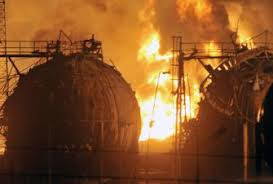The US Chemical Safety Board

The Federal agency responsible for investigating chemical and petrochemical accidents in the United States is the Chemical Safety Board ( link ). The mission of the Board is described in these terms: The CSB is an independent federal agency charged with investigating industrial chemical accidents. Headquartered in Washington, DC, the agency�s board members are appointed by the President and confirmed by the Senate. The CSB�s mission is to �drive chemical safety change through independent investigation to protect people and the environment.� The CSB�s vision is �a nation safe from chemical disasters.� The CSB conducts root cause investigations of chemical accidents at fixed industrial facilities. Root causes are usually deficiencies in safety management systems, but can be any factor that would have prevented the accident if that factor had not occurred. Other accident causes often involve equipment failures, human errors, unforeseen chemical reactions or other hazards. The agency does ...





